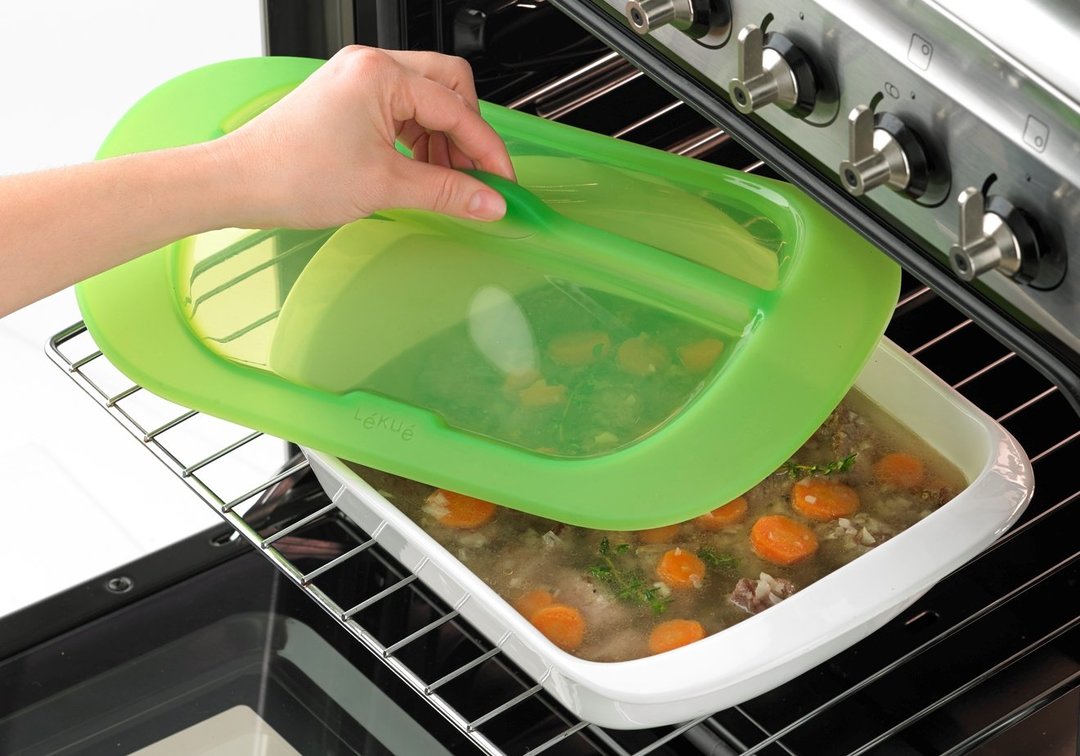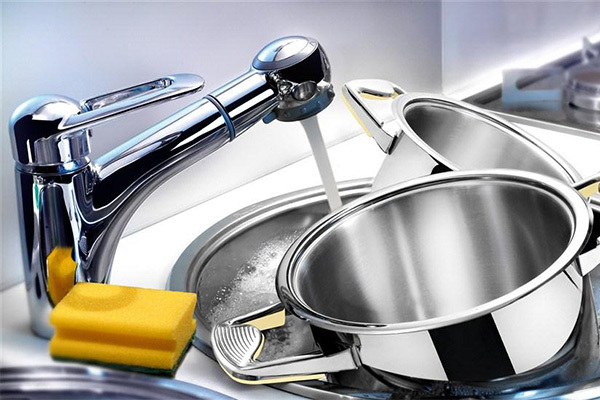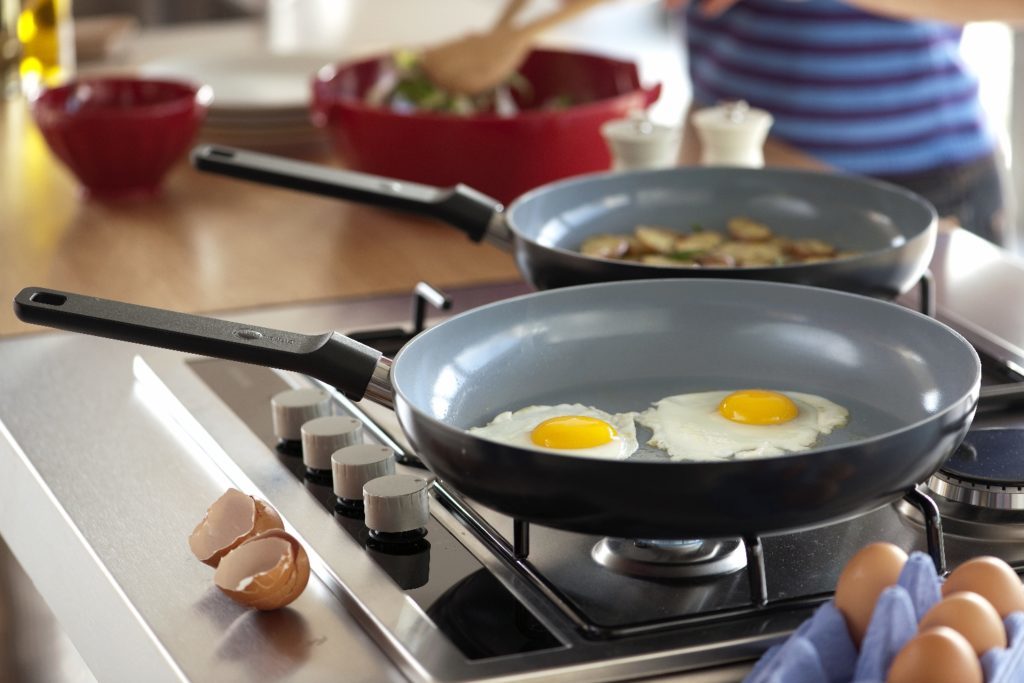Cooking food in the oven is pretty quick and not very troublesome. Here you can bake both juicy chicken and vegetables. And delicious biscuit cakes will bake quickly. But in order for you to have the opportunity to cook different dishes in the oven, you should choose the right dishes. An ordinary plate will not work, because it will simply crack from the high temperature. We will tell you which dishes will not fail in the oven.

Which shape to choose
The content of the article
- Which shape to choose
-
Which material is best suited
- Metal
- Ceramic
- Silicone
- Glass
- How to choose ovenware
The shape of the baking dish depends on what you decide to cook.

- Round. Counts classical, since it is not only possible to bake chicken and potatoes in it. It is also actively used for baking: pies, cakes, etc.
- Oval. Perfect fit for grilling fish with a vegetable side dish. Provides convenience as it fits the full length of the fish.
- Rectangular. Convenient for cooking lasagna, grilled fish and meat. This form is universal and most popular among housewives.
- Curly. Heart, flower, diamond shapes are commonly used for making desserts. And children like the shapes in the form of cartoon characters.
Advice! An experienced housewife has a variety of oven molds in her arsenal. If you are taking your first steps in cooking, buy a rectangular one.
Which material is best suited
Oven baking dishes are made from different materials.
Metal
Traditionally, metal cookware is used for ovens. It is made from a wide variety of metals and alloys.
- Cast iron. Such containers are quite reliable, they will ensure good baking, and the dish will not burn. However, cast iron products are quite heavy. Another disadvantage is the difficulty of removing used oil or grease, which is "absorbed" into the metal.

- Enamelling. Also cast iron with enamel coating. It improves the quality of dish care. However, it has a temperature limitation (up to 220 °) and requires careful handling.

Important! You must not use enameled dishes with defects (cracks, chips) for baking in the oven!
- Stainless steel. One of the most common types of ovenware. Such items are unpretentious to use. Usually they come with a non-stick coating, as without it, baked goods will burn. Refers to affordable, budget options.

- Teflon coated. Modern dishes are increasingly produced with such a coating, it prevents food from burning. Such forms are expensiveand the coating may chip if not properly handled. This makes their further use impossible.

Ceramic
Experts recommend using ceramic containers primarily for extinguishing. And housewives confirm this, happily serving ceramic pots to the table.

Attention! Never use chipped or cracked pans as they contain air bubbles. Such a bubble can expand when heated, and the dishes will crack right in the oven. Therefore, it is necessary to carefully inspect the container before use.
To enhance the baking effect, such dishes are usually placed in a tray of water. Because porcelain and earthenware containers draw in moisture through the pores. And then it boils, and the steam allows the food to bake better.
It should be remembered that hot ceramics become brittle and must be handled with care to avoid knocks or drops.
Important! Ceramics absorb not only water, but also food particles and food odors. To prevent this from happening, it is not recommended to use such containers for storing food in the refrigerator.
Silicone
The material is considered ideal in the kitchen. Its main advantage is that it has non-stick properties and is also easy to clean.

The mold can be damaged as it is afraid of open fire. You should also not cut baked goods directly in the mold.
Reference! Silicone has a wide temperature range. In this form, you can not only bake something, but also freeze berries, fruits and vegetables. And at the same time, the characteristics of the material will not change in any way.
Glass
Tempered glass has become an excellent material for glassware. Baking or stewing in such forms has become more and more common. An additional advantage of such items is a high level of environmental safety. This is due to the absence of impurities.

At the same time, it should be noted that glass requires careful maintenance and does not tolerate sudden changes in temperature.
How to choose ovenware
- If you choose the shape for baking, then it makes sense to take a closer look at the products with ceramic coating. In this case, the likelihood of burning is significantly reduced. This type of tableware is especially suitable for novice hostesses.
- Steel trays with a black coatingdo not use for a long time. It's burnt oil! It accumulates over time, becoming a storehouse of carcinogenic substances, and this can threaten your health.
- If you purchase baking trays, pay attention to sides. They must be high, then the juice from the filling will not flow out.
Now you know which dishes are best for cooking in the oven. Good luck with your cooking and bon appetit!


